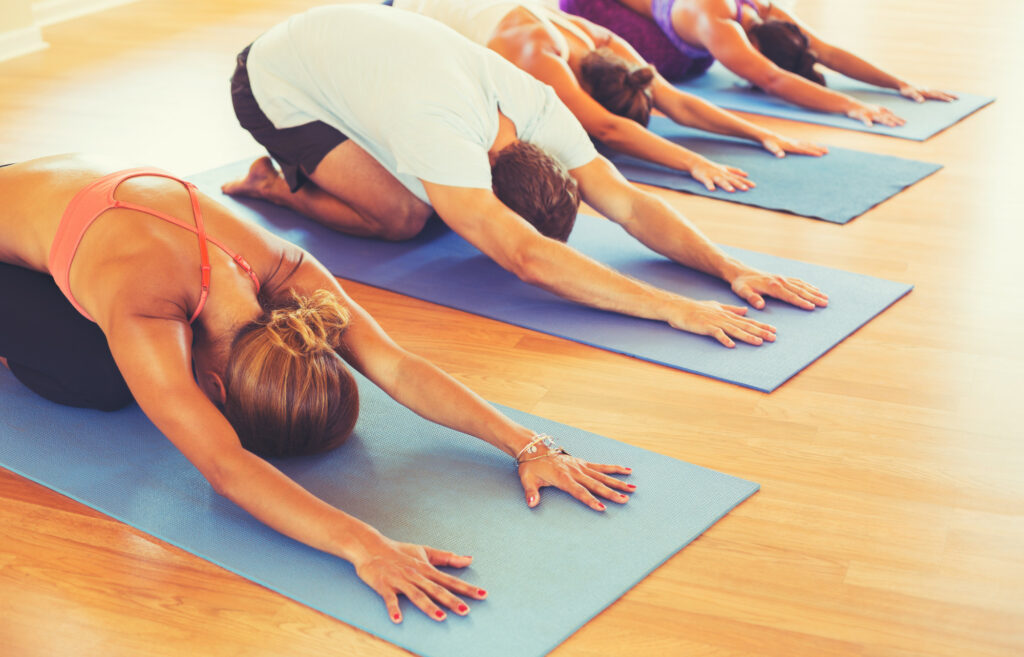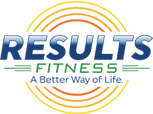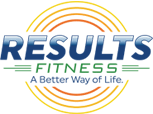
More than 36 million people in the U.S. find harmony through the practice of yoga.
But, contrary to popular perception, yoga is about far more than doing poses and stretches. It’s about understanding and building on the connection between your mind and your body. The practice of yoga is a vast ocean of experiences that can be intimidating to newcomers.
In this article, we explain the most popular types of yoga and give pointers on where to get started if you’re new to the practice.
Close your eyes and breathe deeply. Relax your shoulders. We’re going on a journey together.
Yoga: Movement With Purpose
Learning yoga is a profoundly personal voyage. The uninitiated concern themselves with poses and deep stretching – but that’s only a fragment of the whole. Practicing yoga begins with the mind.
The Yoga Mindset
One of the first mistakes people make when they try yoga for the first time is to treat it like another sport or workout. But yoga is different. At its core, it’s about reconciling your mind with your body’s movement.
You don’t just “do” yoga.
The yoga mindset is one of self-discovery and self-love. While a diet or traditional workout lays out a set period of time a goal and asks you to stick to it, yoga is an experience and the journey is more important than the destination.
The great thing is that you can’t fail. When doing yoga, it doesn’t matter where you’re starting from or where you end up. All that matters is that you connect with yourself.
What Yoga Does for Your Mind and Body
Yoga is one of the oldest wellness practices to exist, dating back to 2700 B.C. While much of western pop culture focuses on the Asanas, or “postures”, the practice encompasses a melding of mind and body. Mindful breathing exercises, meditation, philosophy, ethics, kindness, and self-love are all parts of the whole.
When practiced in a comprehensive manner that encompasses all of the principles, the benefits of yoga are felt across all aspects of life.
It directly influences our nervous systems, bringing with it a whole spectrum of health benefits. Yoga improves your happiness and mental health, reduces stress, lowers blood pressure, improves posture, and reduces aches and pains in your joints.
And it’s one of those things that, the more you do it, the easier it gets. It can be overwhelming at first – but the lessons really do “click”.
How Many Types of Yoga Are There?
How many types of yoga exist is debatable: It depends on who you ask. But broadly, the various yoga styles fall into two categories: the traditional and the modern.
Traditional styles of yoga, while distinct on paper, are practiced together in the same way you work out different parts of your body. More modern styles reflect this, melding various poses, breathing exercises, and techniques from across the spectrum into a single, all-inclusive package.
Classifying yoga by “difficulty” is problematic because different styles of yoga ask different things of participants. Yin yoga, for instance, requires practitioners to sit still for extended periods of time. While not physically demanding, the act of finding stillness and quiet can be difficult for more active people.
That being said, the best way of categorizing yoga styles is to look at the physical demands of each – so that’s what we’ll do.
Beginner Yoga
Thankfully, there are several styles of yoga that are suited for beginners. Many studios that offer classes cater to newcomers – there’s no way to fail and at the start, all that matters is that you show up when learning yoga.
The most appropriate beginner styles include:
- Anusara
- Hatha
- Pranayama
- Restorative
- Yin
“Hatha” is most often pointed out to newbies because it’s the easiest style that offers a well-rounded introduction to all of yoga’s teachings. Most Hatha classes are slow-paced and put equal importance on the practice of breathing and understanding basic yoga exercises.
“Anusara” is a modern version of Hatha and is similarly slow-paced. Pranayama, which refers to breath control, is rarely practiced on its own. Instead, it’s a core teaching that influences every style of yoga. However, certain schools may offer Pranayama-centric classes.
“Yin” yoga, like Hatha and Anusara, is similarly slow-paced. Its focal point is comprised of low-to-the-ground exercises. Frequently combined with extended meditation periods, Yin yoga asks its participants to hold poses for minutes at a time and let gravity do the rest.
Finally, Restorative yoga is about slowing down. It’s often combined with support aids like pillows and blankets, and many of the poses involve opening your heart while close to the ground. A modern take that avoids physically intense exercises, Restorative yoga improves sleep, well-being, and relaxation.
Some of the more intense yoga styles below are followed by a brief restorative session.
Intermediate Yoga
Intermediate yoga exercises build on the foundations of yoga for a more intense experience and a more strenuous physical workout.
While not immediately suitable for beginners, newcomers shouldn’t be put off. People who are in decent shape or welcome a fresh challenge can get used to intermediate yoga quickly. Intermediate forms include:
- Iyengar
- Kundalini
- Vinyasa
“Iyengar” yoga is the logical continuation of Hatha. It is slower and more precise, with a greater focus on the accuracy of each pose. The inclusion of support aids like blankets and straps means that Iyengar can be helpful when recovering from injury.
“Kundalini” yoga incorporates chanting techniques that can feel alien to new practitioners. It is a spiritual form of yoga that connects the mind and body with the chakras, seeking to release energy stored within.
Lastly, “Vinyasa” yoga is medium to fast-paced. It is the study of the flow of movement, making it physically demanding without being too tough for most people to keep up.
Advanced Yoga
The two yoga forms we cover here are both difficult to perform and rigid in execution: Ashtanga and Bikram (“hot”) yoga. Both styles lean more towards the physical workout than the spiritual side of yoga, and they’re ill-suited to beginners who are only just getting accustomed to poses, forms, and breathing techniques.
Anusara Yoga: Open Your Heart
Spirituality and self-love are front and center with Anusara, a modern twist on traditional Hatha yoga. Opening your heart and your body are frequent root poses that you will return to, deepening your sense of connection and your understanding of self.
Ashtanga Yoga: Push Your Limits
Called “power yoga” in its modern equivalent (with good reason), Ashtanga yoga involves six sequences of increasing difficulty to perform. It’s notorious for its physical requirements and caters to advanced yoga practitioners.
While Ashtanga is based on a specific set of moves, its derivative, power yoga, isn’t as restrictive. Ashtanga is similar to Vinyasa yoga, but more strict and with more intensive physical demands on the body.
Bikram Yoga: Feel the Heat
Developed by Bikram Choudhury, there’s a good reason Bikram yoga sits in the “advanced” category we listed above.
It’s hot and intense.
Performed in a heated room that hovers around 105 degrees Fahrenheit, the term “hot” yoga is preferred because of past allegations of sexual misconduct by the style’s founder. Workout sessions last for up to 90 minutes and involve a rigorous set of 26 postures coupled with two breathing exercises.
Traditionalists perform the set in the same order multiple times – though it’s not uncommon for instructors to mix things up. They’re trained instructors with their own takes on yoga, after all.
The heat warms the muscles and joints, to improve flexibility and grant a deeper stretch. This helps to reduce the risk of injuries and shorten recovery time. Strength and tone build naturally as a result.
Hatha Yoga: Start Simple and Slow
The Saksrit term “Hatha” refers to all forms of yoga postures.
Hatha classes are well-tailored to beginners and most beginner-friendly courses incorporate a lot of the teachings of the style. Hatha is slow and steady, building skill and endurance over time. It puts as much emphasis on the mind as it does on the body, allowing newcomers to acquaint themselves with the core teachings of yoga at their own pace.
If you are looking to start a yoga practice, Hatha yoga is the perfect way to start – slow and simple.
Iyengar Yoga: Study Precision
Iyengar yoga is all about precise movements. Dating back to the mid-1900s, Iyengar builds on Hatha yoga by slowing down even further. Poses are held for longer periods of time and undergo minute adjustments to sink further into the pose for a deeper stretch.
Like Restorative yoga, Iyengar frequently incorporates props into its practice to make the experience more accessible. These props also help to reduce the chance of injury.
Kundalini Yoga: Release Your Energy
Kundalini yoga gets its name from the Sanskrit term meaning “coiled snake”. It’s historically considered to be an internal form of energy at the base of the spine from which our life force comes. And it frequently becomes blocked or inaccessible.
The yoga form seeks to release this energy and “uncoil” the snake. The practice integrates chanting and breathwork that emanate from the center of gravity, working with the chakras to open energy pathways.
Practitioners notice a profound sense of connection and spirituality when they practice Kundalini.
Pranayama Yoga: Breathe Easy
Pranayama is a Sanskrit term that refers to controlled breathing. Translations vary from “breath control” to “vital life force”, and measured and conscious breathing is its core teaching.
Pranayama is rarely practiced as a yoga form on its own. Instead, it’s one of the foundational elements of any yoga exercise. Breathing deliberately with intent and in tune with your movement is fundamental to any yoga exercise.
Put simply, practicing yoga without Pranayama is missing a vital element.
Prenatal Yoga: Prepare Your Body
Another modern evolution of yoga, Prenatal yoga is intended to prepare the mind and the body for pregnancy. Breathing techniques for mindfulness lie at the heart of this form, and they can help to manage pain during labor.
It’s also a great way of socializing with other pregnant women who are living through the same processes.
Restorative Yoga: Love Yourself
Emphasizing self-care and the restoration of the body, Restorative yoga is gentle and slow, making it another ideal introduction for newcomers. Discovering how to cultivate a sense of inner peace is the main benefit that people experience, and Restorative yoga is an ideal prep course to take before embarking on one of the more physically demanding forms.
Vinyasa Yoga: Study the Classic Form
Vinyasa focuses on the flow of movement and Vinyasa sessions avoid holding poses for long periods of time. Sometimes confused with Ashtanga, which follows a rigid routine, Vinyasa is a flexible form where every session is different based on an instructor’s teachings.
Many popular intermediate classes build on Vinyasa as a foundation for practice. Dynamic and physically taxing, the style is adaptable, allowing teachers to speed up and slow down the pace of a session on the fly.
Vinyasa is a great option for newcomers who want to challenge themselves, and seasoned yoga practitioners who desire an active practice that is equal parts meditative as it is a workout.
Yin Yoga: Find Your Roots
Low to the ground, yin yoga is about finding moments of reprieve from the frantic happenings of day-to-day life. Restorative for the joints, Yin asks participants to sink deeply into stretches much in the same way that Iyengar does.
Practitioners hold each pose for minutes at a time, which helps them to explore their own internal voice and understand what it means to meditate.
Find Your Balance
There are many types of yoga – and there’s a style that’s suitable for people of any age or fitness level. Hatha and Yin yoga are favored beginner-friendly styles, while Vinyasa is a yoga form that follows people throughout their lives.
And for those seeking a real challenge, Hot and Ashtanga yoga put your skills and grit to the grindstone.
We’re all about the endgame at Results Fitness. Our skilled instructors lead practitioners through deep breathing techniques and yoga exercises for improved balance, strength, and tone. Click here to get in touch.

